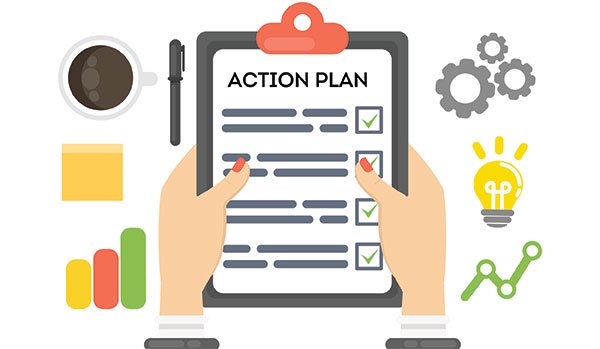If you’re reading this, you’re probably the type of person who takes exercising seriously.
Has the idea of starting a gym suddenly sparked your interest? Or perhaps it’s a lifelong ambition of yours, and you are now ready to make a move.
Either way, what’s brilliant is that you’ve picked the right door. Because the first step you need to take is creating a gym business plan.
As the notorious American football coach, Paul “Bear” Bryant, once said, “It’s not the will to win that matters—everyone has that. It’s the will to prepare to win that matters.”
Knowing the structure of your business, understanding your target market and Unique Selling Point (USP), forecasting your financials, and hashing out any other details about your future gym: these are the vital components needed to create a valuable business plan.
Are you ready to make a name for yourself in a £4.7 billion industry which is steadily growing? Then let’s get started.
But Before We Get on the Treadmill…
Ask yourself: can you afford to run a gym? This venture could see you outlay on equipment, personal trainers, class instructors, insurance policies, property fees, and more, depending on the scope of your gym.
If you’re comfortable financially, think about how much personal time you are willing to sacrifice, especially in the beginning. Maintaining that work/life balance is one of the greatest challenges of starting any business; you’ll probably need extra working hours to become fully operational.
Remember, though, that money and time won’t be enough to pass ‘Go’ if you don’t have good people skills, a savvy head for marketing and sales, or the ability to manage your finances (unless you have extra cash to splash out on skilled people …).
But here’s the good news: it will be worth the money and the hard work if this is your passion. And a big or small gym business plan is a reliable way to make that dream a reality.
Your Gym Business Plan Template
 Once completed, your business plan will be a roadmap to your success, to keep you informed when you’re making big decisions, and to persuade potential partners or investors to join you on your journey.
Once completed, your business plan will be a roadmap to your success, to keep you informed when you’re making big decisions, and to persuade potential partners or investors to join you on your journey.
The latter group is crucial as Score, an entrepreneur mentoring enterprise, explains: in order to raise the capital you need for your gym to grow, “individuals or banks want a realistic forecast for when they will be reaping on their capital” to confidently invest in your gym.
Below is a comprehensive template for your business plan. Include all ten stages and you’ll fly. Miss one and you’ll fall. Because they are all equally relevant to your future as a gym owner.
Step 1: Executive Summary
Your executive summary needs to shout:
The what – your goals
The why – your mission
The how – what’s going to make you a success story
The bigger picture – your vision
It has to be attention-grabbing, to the point and clarifying. Which is why you need to keep it short. But that doesn’t mean you should rush this part of your business plan. It is your business pitch after all, as the Telegraph explains:
“The fact of the matter is that decision makers can only read so much in the course of a day. So if authors want their work to be paid attention, they must first sell it with a convincing pitch. To this end, executive summaries are a necessary and essential part of running a business, from start to finish.”
If you’re itching to say more on your goals and vision, don’t panic. You can flesh out these points in your company overview.
Step 2: Company Overview

This is where you put passion onto paper.
In your executive summary, you briefly outlined your vision and mission statement. In your company overview, you can elaborate on these points for further insight. Think of your vision statement as if it were a tagline on your future website. Cover:
- The purpose of your gym
- Who it’s going to be for
- How you’re going to accomplish your business aims
Your mission statement can be more personal. Talk about your desired outcome for the business. Here’s an example from Nike:
“To bring inspiration and innovation to every athlete in the world. If you have a body, you have an athlete”
Consider the main reason you decided to go into this industry and share it. Is there something you want to change about the fitness world? Or make it better?
Then give your readers a brief word on your history:
- What have you done previously?
- Have you had any other businesses?
- What is your current status?
Again, this is useful for your investors and partners in understanding your journey and future plans. The more they know, the more they trust you.
Then you need to outline your strategy: discuss what services you plan to offer in the beginning, and how you might approach development and new offerings. Perhaps you’ll need to hire an instructor or build a new facility like a spa or studio. This will be a valuable resource for helping you realise when or where you might need funding or extra staff.
Get another green tick for thinking about ways to increase your market share. You could set up pro bono services with workplaces and schools, for instance. Then you might start to introduce a fee gradually: an efficient way to convert big target customers.
Whether you want to create a gym and spa business plan or any other kind of blueprint, an overview should communicate your planning objectives to potential bankers, partners, employees and financial backers.
Step 3: Management
Consider the positions you’ll need to fill and how these people are going to help your gym succeed.
What’s your employee ladder going to look like? What or who will they be responsible for? What incentives can you offer?
Follow this through into a summary that emphasises how their skills and management experience will solidify your business’s success.
Go back and read this section as if you are an outsider considering becoming a partner to this gym. Does the management structure make you feel satisfied and excited, or concerned?
If it’s the latter, explore how you can change this by making your chain of command stronger.
Step 4: Market Research and Marketing
 Marketing can be a playground for the creative. It’s exploring all the different customers you could target, coming up with ideas that will make your business irresistible, and conceiving ways to drive sales.
Marketing can be a playground for the creative. It’s exploring all the different customers you could target, coming up with ideas that will make your business irresistible, and conceiving ways to drive sales.
If marketing isn’t your thing, motivate yourself with the knowledge that solid research and marketing strategies will help you map out a plan for growth.
Your first goal is to summarise your market research. Not quite there with your findings? Think about your location, existing gyms in the area, and your local demographic.
When you are ready, use this space to define your target market. It might be:
- Students
- Schools
- Working professionals
- Senior executives
Or even a specific group, like cyclists. Then explore why this specific demographic would join a gym – i.e. for cardio.
Having done your market research, you should have a better understanding of your target audience. Now ask yourself:
- How will you gain their loyalty?
- What makes you special?
- What’s the best membership package you can offer?
- Is there a demand for special equipment?
Answer these in your plan and define your Unique Selling Point (USP). This should communicate what makes your enterprise a valuable investment opportunity.
Identify your marketing strategies here and you’ll feel more secure about raising your business’s income in the future.
Your marketing strategy might include niche services such as:
- Improving services
- Advertising
- Sponsorship
- Loyalty plans
- Website promotions
- Email marketing
- New equipment
- Promotions
- Prices
And any other ideas you have to build your customer base and increase your revenue.
Step 5: Services and Amenities
 A description of your products and services will paint a picture of how big your gym is going to be. Grab this opportunity to test your vision; do you have enough capital to cover these assets? If you don’t, how will you get the funding you need? (More on that in a moment).
A description of your products and services will paint a picture of how big your gym is going to be. Grab this opportunity to test your vision; do you have enough capital to cover these assets? If you don’t, how will you get the funding you need? (More on that in a moment).
Here are some examples of products you might buy:
- Gym equipment (treadmills, rowing machines, etc.)
- Specialist equipment (have the best equipment available to draw in members like body-builders, etc.)
- Food or drink products (energy drinks, health foods etc.)
And services:
- Personal training
- Classes (yoga, spinning, body pump etc.)
- Lockers
- Spa
- Swimming pool
- Physiotherapy
For bonus points: describe the benefits of your products and services. Perhaps this is a gym and spa business plan; look to demonstrate why this added facility would be a valuable asset to your customers.
Next, you want to create a pricing list. The easiest way to do this is to bullet point the costs for specific products and services. This will lead you to your financial forecasting.
Step 6: Financial Projections
Create a menu for your gym. What do you need to spend your capital on? Leave no table unturned, and make sure you put an estimate next to each purchase.
Here are some key areas to get the ball rolling:
- Legal expenses
- Hiring costs
- Building work
- Gym Equipment
- Operational costs for the first three months
- Account software
- CRM system
Then it’s time to get real. Get out your calculator and write down how much you will need to successfully launch your gym. This will give you a clear indication of what you can achieve with your budget, and what you might need funding for.
Your next step in this part of your gym business plan is to highlight potential sources of income.
The idea is to reassure your investors, stakeholders and potential employees that you have a solid plan for your return on investment. Think about how much your services will bring in i.e. classes, a cafe, services, a spa and jot down your educated guess here.
You could also explore opportunities to sell products, such as health foods. You could produce your own protein shakes or energy bars, for example. Just ensure that if you do plan to sell food you keep in check with food hygiene standards.
Step 7: Financial forecasting:
 Your financial forecasting would be under the most scrutiny if you were in a room with Alan Sugar. As Entrepreneur contributor, Tim Berry, highlights:
Your financial forecasting would be under the most scrutiny if you were in a room with Alan Sugar. As Entrepreneur contributor, Tim Berry, highlights:
“Your sales forecast is the backbone of your business plan. People measure a business and its growth by sales, and your sales forecast sets the standard for expenses, profits and growth.”
Outline your sales forecast for the first, second and third year of your business. It might also be a good idea to detail your active members predictions for your first year.
Make an educated guess based on:
- Unit sales per month
- Any relevant past data that you have
- Breaking down your purchases (as you will have done in the financial projections)
Step 8: Financial Strategy
How will you use your fees to increase enrolment? Perhaps you discovered that all the gyms in your area have higher prices than average. This would be a golden opportunity to add value to your business by being financially sensitive (you could lower your membership fees or have better offers than the competition).
You could also think about rewards for loyal customers, discounts for group registrations, and pro bonos (as we previously discussed).
Additionally, if you’re creating a gym and spa business plan, compliment your gym with discounts for the spa facilities (jumping in the jacuzzi after a workout session is a gym-goer’s dream come true).
Putting your pricing strategy on paper will make you feel more secure about the future of your gym. The Balance contributor, Darrell Zahorsky, agrees:
“The pricing strategy of your small business can ultimately determine your fate. Small business owners can ensure profitability and longevity by paying close attention to their pricing strategy.”
Step 9: Payment Options
How a customer pays for their gym membership or other fees is important. Use clunky, out of date and unregulated systems for processing payments and you’ll repel your customers.
If you do have a quick and painless booking system or banking platform in mind, make it known in this section of your gym business plan.This will instil confidence in your potential investors: with a seamless buyer experience in operation, your customers have an extra reason to be loyal to you.
Your most obvious choice is a managed direct debit service.
Because having automated payments in place ensures that bills are never forgotten, delayed or lost, allowing you to maintain a solid cash flow.
And the easiest way to integrate this into your business is to use a third-party to operate any direct debits on your behalf.
Take FastPay, for instance. Its simple user interface does wonders for user experience.
And since FastPay independently processes your payments, you’ll never have to chase down customers, giving you more time to focus on developing other areas of customer service. It’s also secure: customers are protected by the Direct Debit guarantee.
With a Direct Debit solution like FastPay in place, your customer retention level will rise. Why would they move to a competitor if paying for a class or gym membership through you is so effortless?
Step 10: Funding
 Make it loud and clear where any extra start-up capital is going to come from. Use this as an opportunity to think realistically about your business. Can you obtain the funding you need to meet your goals? Or do you need to revise your plan?
Make it loud and clear where any extra start-up capital is going to come from. Use this as an opportunity to think realistically about your business. Can you obtain the funding you need to meet your goals? Or do you need to revise your plan?
Here are the key external resources you might consider to get funded:
- Personal savings
- Soft loans (family members, friends, gifts)
- Bank loans
- Crowdfunding
- Partners
- Sponsorship from other business
Detail exactly where you plan to get your funding from and how much you are going to gain. And if you’ve previously made loan applications, make a note of them here for any potential investor to consider.
You’re One Step Closer to Cutting the Red Ribbon
With a big or small gym business plan that details everything you have learnt today, you’ll be unstoppable in your new venture. Because you now have a solid roadmap that:
- Will act as a point of reference for you when you have to make important decisions
- Be a resource to help you secure investment
- Give you security that you have explored all aspects of your new business
- Show partners or new employees which direction you aim to head in
Your Personal Checklist:
Before you leave, here’s a personal checklist to guide you through the next stages of running your own gym. Refer to it throughout the development of your business to ensure you don’t miss a thing.
- Write business plan
- Register business
- Apply for business license and permit
- Open business bank accounts
- Select online payment platform
- Obtain tax payer’s ID
- Purchase insurance
- Organise rental space / purchase facility
- Purchase / rent equipment
- Secure funding
- Set up Direct Debit service
- Recruit employees
- Draft contract documents and any other legal documents required
- Design company logo and brand
- Develop website
- Write website content
- Create accounts on social media platforms
- Design leaflets and brochures
- Organise branded uniforms
- Hold launch party
Starting any business is not without its challenges, but the rewards are more than worth it in the end. Sign up to a Direct Debit bureau and make collecting recurring payments from your fitness suite members a reliable, secure and pain-free process. It’ll be a weight off your mind.












